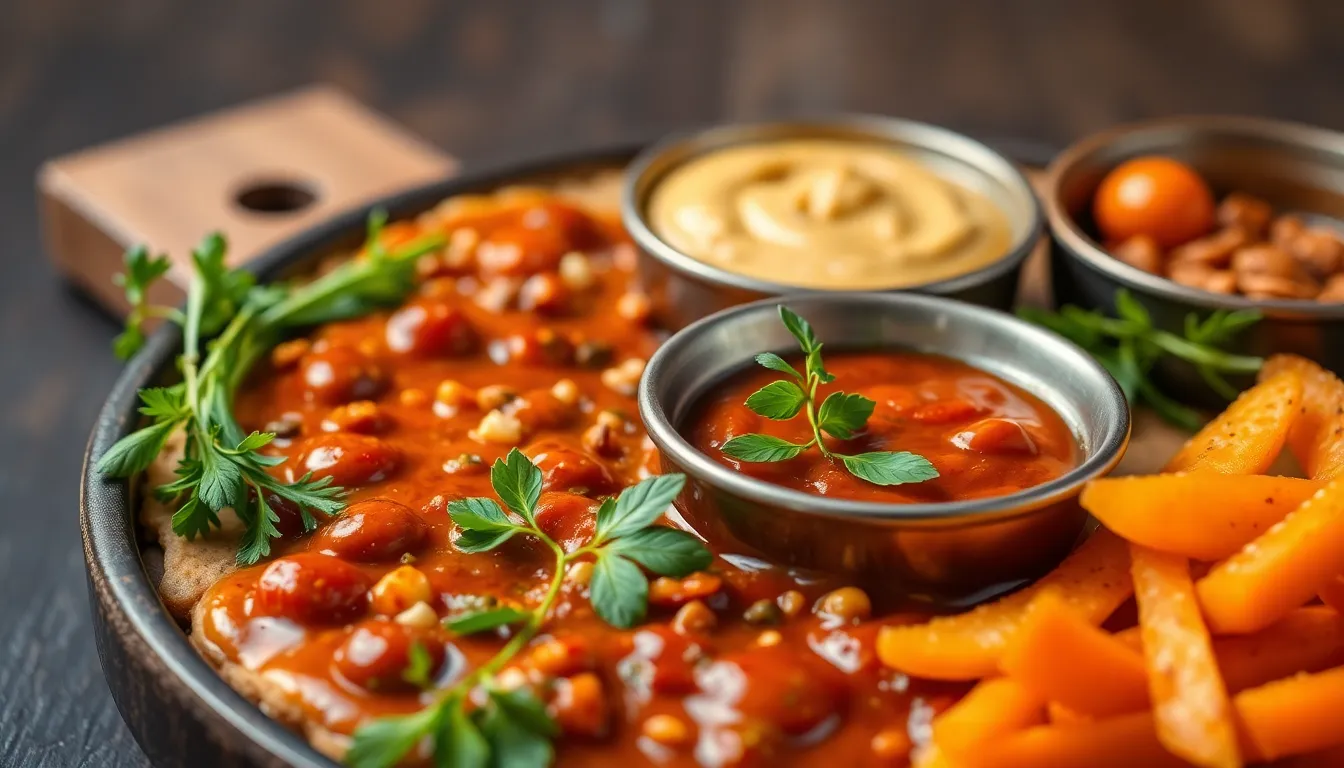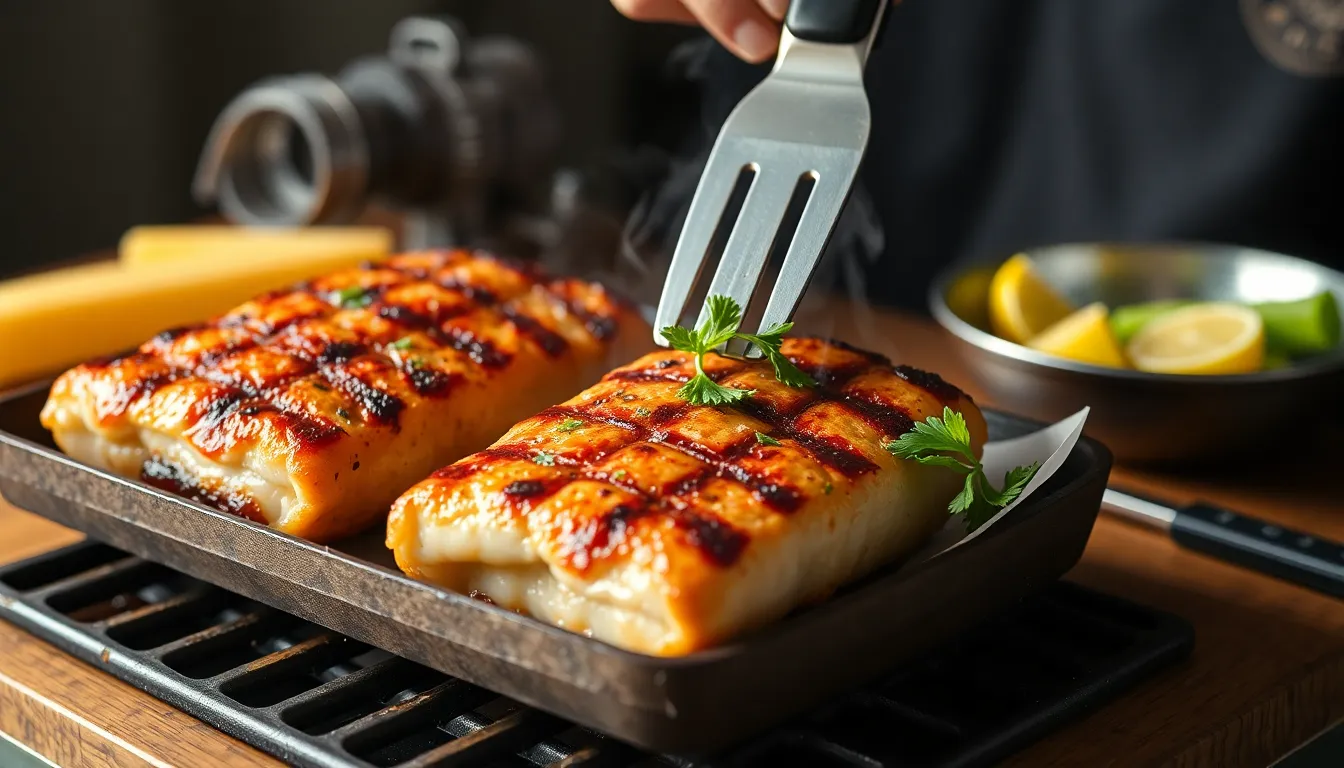Cooking with Herbs: How to Use Them in Sauces and Dips
Herbs have long been heralded as the secret weapons of culinary enthusiasts, lending depth and complexity to dishes with just a sprinkle or a handful. They transform simple ingredients into vibrant creations, infusing flavors that dance on the palate and awakening our senses. In this post, we will explore the myriad ways to incorporate herbs into your sauces and dips, enhancing your cooking repertoire and bringing freshness to every bite.
Section 1: Understanding Herbs
1.1 Types of Herbs
There are countless herbs used in cooking, each with its distinct flavor profile, aroma, and culinary purpose. Here’s a list of some common culinary herbs and a brief description of each:
- Basil: Sweet and slightly peppery, often used in Italian cuisine.
- Cilantro: Fresh and citrusy, commonly used in Mexican and Asian dishes.
- Parsley: Mild and slightly peppery; a versatile herb for garnishing and flavoring.
- Dill: Fragrant with a slight sweetness, perfect for pickles, seafood, and creamy sauces.
- Thyme: Earthy and slightly minty, complements a wide variety of savory dishes.
- Oregano: Robust and slightly bitter; a staple in Mediterranean cooking.
1.2 Fresh vs. Dried Herbs
Fresh herbs are vibrant and aromatic, providing a burst of flavor, while dried herbs offer a more concentrated essence. Here’s a quick comparison:
- Fresh Herbs: Best used at the end of cooking, as they lose flavor when heated too long.
- Dried Herbs: Have a longer shelf life and are ideal for slow-cooked dishes, where their flavor can infuse over time.
As a general rule of thumb, use three times the amount of fresh herbs as dried herbs in a recipe. For example, if a dish calls for 1 teaspoon of dried thyme, use 3 teaspoons of fresh thyme.
1.3 How to Store Herbs
Proper storage can extend the life of your herbs, keeping them fresh and flavorful. Here is a helpful table outlining storage methods for different types of herbs:
| Herb | Storage Method | Shelf Life |
|---|---|---|
| Basil | Refrigerate in water | 1 week |
| Cilantro | Wrap in damp paper towel | 1 week |
| Parsley | Refrigerate in water | 1 week |
| Thyme | Refrigerate in plastic bag | 2 weeks |
| Oregano | Store in a cool, dark place | 6 months (dried) |
Section 2: Basic Sauces and Dips with Herbs
2.1 Pesto: A Classic Herb Sauce
Pesto is a versatile sauce that is bursting with flavor and can be used in various ways, from pasta to sandwiches. Here’s a simple recipe to get you started:
- Ingredients:
- 2 cups fresh basil leaves
- 1/2 cup grated Parmesan cheese
- 1/2 cup olive oil
- 1/3 cup pine nuts (or walnuts)
- 2 garlic cloves
- Salt and pepper to taste
Preparation Steps:
- In a food processor, combine basil, Parmesan cheese, pine nuts, and garlic.
- Pulse until finely chopped.
- With the processor running, slowly add olive oil until fully incorporated.
- Season with salt and pepper to taste.
Variations: Try walnut pesto by substituting pine nuts with walnuts or add spinach for a spinach pesto variation.
2.2 Herb-Infused Yogurt Dip
This refreshing yogurt dip is perfect for snacking and pairs wonderfully with vegetables and pita bread.
- Ingredients:
- 1 cup plain Greek yogurt
- 1/4 cup chopped fresh dill
- 1/4 cup chopped fresh chives
- 1 tablespoon lemon juice
- Salt and pepper to taste
Preparation Steps:
- In a bowl, mix together yogurt, dill, chives, and lemon juice.
- Season with salt and pepper to taste.
- Chill in the refrigerator for at least 30 minutes before serving.
Suggestions for Pairings: Serve with fresh vegetables like carrots, cucumbers, and bell peppers, or use as a spread on pita bread.
2.3 Chimichurri Sauce
This vibrant Argentine sauce is a delightful addition to grilled meats and vegetables.
- Ingredients:
- 1 cup fresh parsley, finely chopped
- 1/2 cup olive oil
- 1/4 cup red wine vinegar
- 4 garlic cloves, minced
- 1 teaspoon red pepper flakes
- Salt and pepper to taste
Preparation Steps:
- Combine parsley, olive oil, vinegar, garlic, and red pepper flakes in a bowl.
- Stir until well mixed and season with salt and pepper.
- Let the sauce sit for at least 10 minutes before serving to let the flavors meld.
Best Dishes to Accompany with Chimichurri: This sauce is fantastic over grilled steak, chicken, or even roasted vegetables.
2.4 Herb Vinaigrettes
Whipping up a homemade vinaigrette is simple and allows you to explore a variety of flavors. Here’s a basic formula:
Basic Vinaigrette Formula: 3 parts oil to 1 part vinegar, plus herbs and seasonings.
Examples of Herb Combinations for Dressings:
- Mint and Lemon: Refreshing for summer salads.
- Thyme and Red Wine Vinegar: Great with roasted vegetables.
- Basil and Balsamic: Perfect for Caprese salads.
Section 3: Creative Uses of Herbs in Sauces and Dips
3.1 Incorporating Herbs into Traditional Recipes
Herbs can easily elevate classic sauces by simply adding fresh or dried herbs to the mix. Here are some ideas:
- Marinara Sauce: Add fresh basil and oregano for a burst of flavor.
- Alfredo Sauce: Incorporate fresh parsley or thyme for a fresh twist.
- BBQ Sauce: Try adding rosemary or sage for a unique flavor profile.
Tips for Balancing Flavors: When adding herbs, start with a small amount and gradually increase until you reach your desired flavor.
3.2 Experimenting with Unique Combinations
Don’t be afraid to think outside the box! Here are some unusual herb pairings worth trying:
- Mint and Yogurt: Quick, refreshing, and perfect for drizzling over grilled meats.
- Dill and Avocado: Blend into a creamy dip for a unique taste.
- Rosemary and Garlic: Great for dipping oils or as a marinade for meats.
Encouragement to Get Creative: Use your favorite herbs enthusiastically and don’t hesitate to mix and match. Culinary creativity is only limited by your imagination!
Section 4: Tips for Cooking with Herbs
4.1 Timing for Adding Herbs
The timing of when you add herbs during cooking can significantly affect the final flavor of your dish. Here’s a guide:
- Fresh Herbs: Add at the end of cooking for maximum flavor.
- Dried Herbs: Add at the beginning of the cooking process to allow their flavors to infuse.
4.2 Pairing Herbs with Ingredients
Understanding which herbs complement various ingredients can enhance your dishes remarkably. Here are some suggestions:
| Herb | Complementary Ingredients |
|---|---|
| Basil | Tomatoes, mozzarella, chicken |
| Cilantro | Beans, chicken, fish |
| Dill | Fish, potatoes, yogurt |
| Thyme | Poultry, mushrooms, carrots |
| Oregano | Meats, tomatoes, cheese |
4.3 Growing Your Own Herbs
Having fresh herbs on hand can greatly enhance your cooking experience. Here’s a brief guide on starting your own herb garden:
- Choose a Location: Select a sunny spot with good drainage.
- Pick Your Herbs: Start with easy-to-grow herbs like basil, parsley, or mint.
- Care and Maintenance: Water regularly, prune as needed, and enjoy your fresh herbs!
Benefits of Having Fresh Herbs on Hand: Fresh herbs not only provide vibrant flavors but also add nutritional value to your meals.
Conclusion
Cooking with herbs is a delightful journey that enhances the flavors, aromas, and overall enjoyment of your dishes. Whether you’re creating classic sauces and dips or experimenting with unique combinations, the right herbs can transform your culinary experience. As you explore the world of herbs, remember to be creative, trust your taste buds, and savor the delicious results. So grab those fresh herbs, roll up your sleeves, and let the magic of cooking with herbs begin!




